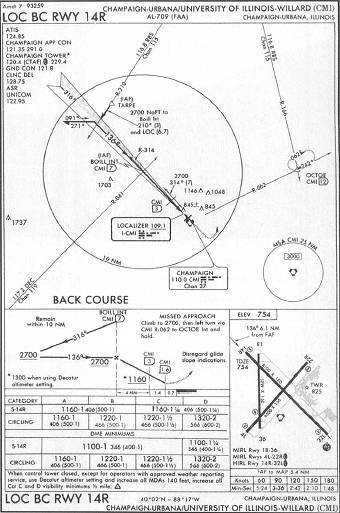
You tell yourself that if you can make it down unscathed, you’ll spring for that HSI and always be able to correct toward the needle by always putting the course pointer on the front course. The mantra “fly away from the needle” isn’t foreign to you, but was archived about a minute after you got your rating. Then there’s that whole thing with flying course corrections away from the needle, not towards. You know that a back course is often available as an add-on approach to an ILS.

The first task is to pull up the chart and dig into the mental files for back-course basics. Seems like everyone else is asking for and getting the RNAV 20, but you’re stuck with limited capabilities. Besides, bases are dropping towards 500 feet and you’re not in the mood for a low circle. Really? There’s a brisk south wind prompting ATC to advertise the default approach, but how about a circle-to-land from the ILS 2? VOR 13? Anything else? Denied, due to conflict with traffic using 20. Nearing Columbia, ATC says: “Expect vectors to Localizer Back Course Runway 20.” Think Back All’s well for most of the trip, and you do get a shortcut from Kirksville direct Hallsville. You also like having the Hallsville VOR at the end of the route in case of lost comms it’s on the airway, it’s an initial approach fix and so offers an easy place to pull over and hold if the need arises. You also have the option, that you used on your last trip to Columbia, to ask for more direct routing via the Fort Dodge and Kirksville VORs when the MOA is cold. Second, given the 182’s equipment, there are enough VORs with nearby alternate stations to allow you to stay on the needles throughout. First, this route skirts the large Crypt MOAs in northwestern Iowa and so takes military airspace safely out of the picture. This isn’t the most efficient way to reach KCOU, but there are no convenient airways and you have two advantages. Looks simple enough, but the curious will draw out this course and see all the zigzagging required to follow Victor 175. The filed route, which will be reversed to get home, departs from Watertown, South Dakota (KATY) and is: POEMS OTG V175 HLV.
LOCALIZER BACK COURSE SYMBOL PRO
No big deal you’ve been flying this plane and panel for years and are a pro with ILS approaches.
LOCALIZER BACK COURSE SYMBOL PORTABLE
(For those of you watching at home, this is pre-RNAV Distance Measuring Equipment.) A portable GPS offers limited capabilities to navigate outside of your raw-data setup. Equipment includes dual nav receivers, one glideslope receiver and DME.

This is your third trip to Columbia, Missouri (KCOU), where you’re flying in from the northwest in your trusty but basic Cessna 182. When you’re down to one choice due to weather conditions and limited equipment, well, then, you’re just gonna have to decide if you’re up for trying something new. Unfamiliar approaches can also pop up at airports you thought you knew well. New airports often mean flying procedures, or parts thereof, you might not have flown before.


 0 kommentar(er)
0 kommentar(er)
